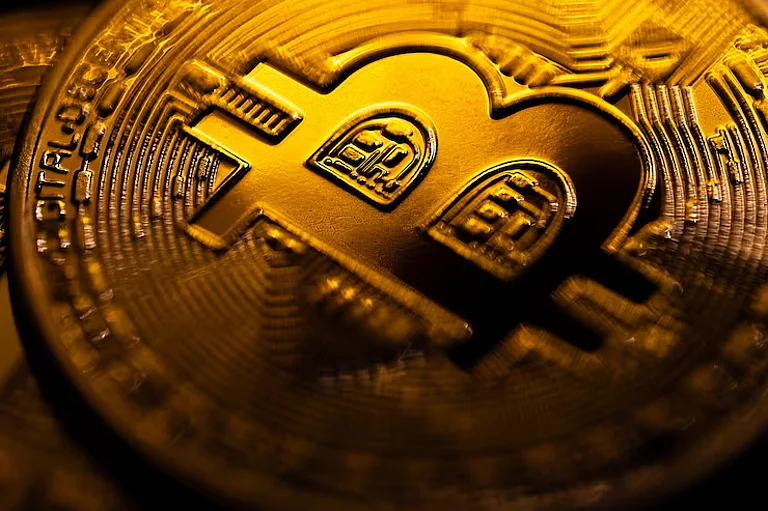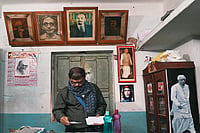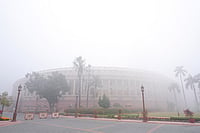DeFi has fully changed how people interact with financial systems. Without banks or brokers, anyone with an internet connection can lend, borrow, or earn passive income directly through blockchain-based smart contracts. Yet, the same openness that makes DeFi appealing also introduces a range of new concerns-chief among them: trust, transparency, and safety.
This is where Decentralized Autonomous Organizations come in. DAOs serve as the backbone of governance on many DeFi platforms, making sure that decisions are made transparently and that user funds are handled securely. By automating processes and democratizing control, DAOs enhance how protocols operate by turning communities into decision-makers.
The paper discusses in detail how DAOs drive greater transparency and safety within DeFi ecosystems, their mechanisms of operation, benefits, and shortcomings, and why DAO governance matters even more with the maturation of the DeFi sector.
Understanding DAOs in Simple Terms
A DAO-or Decentralized Autonomous Organization-is a type of self-governed system that operates on blockchain through smart contracts: pieces of code which automatically execute an operation when certain conditions are reached. Unlike traditional organizations with CEOs or management teams, a DAO runs collectively through its token holders, who vote on key proposals and policy changes.
Core Characteristics of DAOs:
Transparency: All activities and voting are recorded on the blockchain.
Automation: Smart contracts enforce the rules—no human override.
Community-driven: Tokens for governance give users voting rights.
Borderless: This means that anyone can take part in the voting process, as long as they own the token.
Immutable record: Once decisions are made and executed, they can’t be tampered with.
In the case of DeFi ecosystems, DAOs govern lending pools, staking mechanisms, and liquidity mining systems. For example, MakerDAO, which oversees the stablecoin DAI, or Aave DAO, in control of the Aave lending protocol, constitute very real examples of how DAOs guide billion-dollar financial systems with no single point of central authority.
Why Transparency and Safety are Critical in DeFi
DeFi is built on open and programmable financial systems, but openness itself doesn't ensure safety. Billions of dollars flow every day through smart contracts, and without oversight, vulnerabilities, scams, or manipulation might happen.
Transparency ensures that:
All the transactions, votes, and allocations are visible.
Protocol upgrades are reviewed by the community.
Power is apportioned among different entities, therefore reducing any risk of manipulation.
Safety ensures that:
Protocols can quickly respond to exploits or vulnerabilities.
Some risk parameters, such as borrowing limits or collateral ratios, are governed democratically.
User funds are safe from misuse or faulty decisions.
When these two components align, investors can be sure that their investments—and thereby, their DeFi yield—are dealt with according to fair and transparent conditions.
How DAOs Improve Transparency in DeFi
Transparency is considered the backbone of trust in decentralized ecosystems. In other words, DAOs build trust through mechanisms that ensure everything on the blockchain is visible, verifiable, and traceable.
1. On-chain Governance
Every decision—whether adjusting interest rates, introducing a new feature, or modifying rewards—is publicly proposed, discussed, and voted on.
Each proposal and vote are immutably recorded so that no one can secretly manipulate the outcomes.
2. Treasury Transparency
Treasuries under the control of DAOs make it possible for the community to track how funds are used for protocol development, marketing, and liquidity incentives. Transparency acts as deterrence against misuse and corruption.
3. Execution of Smart Contracts
Once proposals are approved, smart contracts automatically enforce the outcome; no human interference is possible. It engenders confidence in the processes, as code and not people ensure the implementation of any specific deal.
4. Open Communication and Documentation
Many DAOs run publicly accessible discussion forums, Discord servers, and calls with the community. This ensures that protocol updates and decisions are disclosed publicly to its members.
5. Democratic Participation
Anyone owning governance tokens can submit or vote for proposals. This inclusivity provides users with a feeling of ownership and eliminates non-transparent decision-making, making it a much fairer process.
Steps a DAO Can Take to Enhance Transparency
Publish governance token distribution and vesting schedules publicly.
Implement real-time dashboards that track treasury movements.
Record and publish meeting notes or community discussions.
Automate proposal execution through on-chain contracts.
Make all the results of voting public.
These measures establish an open culture where users can monitor how their funds are being used, thus aiding accountability and building trust.
How DAOs Improve Safety within DeFi
While transparency builds trust, safety protects the ecosystem. Safety in DeFi means making sure that smart contracts are reliable, treasury assets are well-protected, and risk is managed with efficiency.
1. Collective Oversight
Traditional finance relies on a central authority to make decisions about security, whereas DAOs diffuse that into collective governance amongst thousands of token holders.
This reduces the chances of insider manipulation or administrative errors.
2. Dynamic Risk Management
DeFi protocols rely on parameters like collateral ratios, borrowing limits, or interest rates to maintain stability. This can be altered quickly in response to market conditions by means of DAO voting; thus, it prevents liquidity crises.
3. Smart Contract and Code Audits
Most of the DAO-driven protocols spend resources on regular audits of smart contracts. Such audits further improve the technology security by finding bugs earlier.
4. Emergency Governance
In these situations, when there is any kind of exploit or hack, the structural nature of a DAO allows members to vote on critical decisions like pausing operations, freezing assets, or deploying a bug fix to make sure further damage is contained as quickly as possible.
5. Incentive Alignment
DAO participants usually hold the protocol's tokens; therefore, their wealth depends on the health of the protocol. This very factor aligns their interests with ensuring long-term security and sustainability.
6. Reduction of Single Points of Failure
Centralized systems rely on one authority, which, when compromised, means the failure of the entire system. In DAOs, control is distributed so that no single person or team can take action unilaterally against community interest.
Example: Safety in DAO-Governed Yield Protocols
In most yield farming or liquidity protocols, users stake tokens to get DeFi yield. DAOs decide on key parameters such as:
Reward distribution rates
Lock-up periods
Collateral requirements
Risk assessment for new asset pools
By ensuring yields are sustainable, realistic, and aligned with the protocol's long-term stability.
Pros and Cons of DAO Governance in DeFi
Advantages
Enhanced Transparency: All governance and treasury actions are public.
Improved Security: Decentralization minimizes insider threats.
Community Empowerment: Token holders participate in major decisions.
Automated Execution: Smart contracts reduce human manipulation.
Global Inclusivity: Anyone, anywhere, can participate.
Limitations
Low Voter Turnout: Many token holders remain inactive, reducing diversity of input.
Token Concentration: Wealthy holders may control votes (“whale dominance”).
Slow Decision-Making: Reaching consensus can delay urgent actions.
Regulatory Uncertainty: Many jurisdictions lack clear DAO legal frameworks.
Smart Contract Vulnerabilities: Even decentralized code can contain bugs.
Comparison Table: How DAOs Improve Transparency and Safety
Feature | Transparency Benefit | Safety Benefit |
On-chain Voting | Public record of every proposal and result | Prevents hidden changes or manipulation |
Treasury Management | Tracks every expenditure in real time | Detects misuse or unauthorized transfers |
Smart Contract Execution | Automates governance actions transparently | Eliminates manual tampering |
Community Governance | Reduces centralized secrecy | Distributes risk and responsibility |
Open Communication Channels | Encourages accountability and debate | Enables quick alerts during threats |
How DAOs Strengthen DeFi Ecosystems
DAOs are not just governance tools—they are trust machines. Their transparency builds credibility, while their safety mechanisms create resilience. Together, they strengthen the foundation of DeFi by ensuring that growth remains community-driven and ethically aligned.
1. Supporting Sustainable Growth
DeFi protocols governed by DAOs can expand responsibly, balancing rewards with risk. This prevents unsustainable yields and liquidity crises.
2. Boosting Investor Confidence
New users and institutions are more likely to engage with DeFi when governance structures are visible and secure.
3. Empowering Global Participation
DAOs remove borders from finance. Whether you’re in India, Japan, or Europe, you can propose, vote, and contribute to DeFi governance equally.
4. Encouraging Innovation
Transparent frameworks allow developers to build new features with community input, fostering creativity and continuous improvement.
Conclusion
DAOs have become one of the defining forces shaping the future of decentralized finance. By replacing centralized control with collective governance, they empower communities to manage financial protocols transparently and securely. Their design ensures that every transaction, proposal, and decision is visible, verifiable, and tamper-proof—strengthening user trust.
From risk management to treasury oversight and DeFi yield optimization, DAOs transform how DeFi platforms operate. They represent a new standard of accountability—where users are not just participants but owners of the ecosystem.
However, true decentralization comes with challenges: low voter participation, token concentration, and regulatory ambiguity. Overcoming these will define how effectively DAOs can balance transparency with safety in the years ahead.
Ultimately, DAOs show that trust doesn’t need to be promised—it can be programmed.
As DeFi evolves, DAOs will continue to be the invisible guardians ensuring its transparency, integrity, and security for everyone involved.
Frequently Asked Questions (FAQs)
Q1: What makes DAOs more transparent than traditional companies?
DAOs operate on blockchain technology, where all transactions, votes, and decisions are permanently visible to anyone. Traditional companies depend on internal records and selective disclosures.
Q2: Can a DAO prevent all forms of fraud or hacking?
No. While DAOs improve governance safety, they cannot remove risks inherent in smart contracts or market volatility. However, collective oversight helps detect and mitigate such risks faster.
Q3: How do DAOs impact DeFi yield farming protocols?
DAOs decide parameters for yield farming—reward rates, duration, and token emissions—ensuring that the DeFi yield offered remains fair, sustainable, and not manipulated by insiders.
Q4: Do DAOs replace traditional regulation?
Not yet. DAOs function in a decentralized manner but still operate in a world with evolving legal frameworks. Many countries are exploring ways to recognize DAOs as legal entities.
Q5: How can I participate in a DeFi DAO?
Acquire the governance token of a protocol, connect your crypto wallet to its official platform, review open proposals, and vote or delegate your votes. Some DAOs even reward active contributors.























